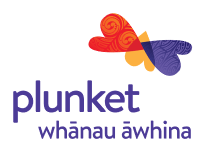Key points about attachment
- all pēpi will form attachments when cared for
- the type of attachment formed will largely depend on the quality of that care
- secure attachments have positive outcomes for babies and children throughout their lives

Call PlunketLine on 0800 933 922 for parenting advice.
What is attachment?
Attachment refers to a particular aspect of a child's relationship with their parents and other carers in their life.
It is the child's instinct to seek closeness to specific people who will comfort, protect and help organise their feelings. Pēpi usually have an attachment relationship with a number of people who have provided care. This includes mothers, fathers, grandparents, foster parents and early childhood carers.
Pēpi are born ready to build an attachment to their parents - they are hardwired for relationships.
It is the most researched approach to looking at child-parent relationships.
How does the attachment system function?
The attachment system functions to ensure a baby and child's protection and survival. When the system is activated, seeking closeness, comfort or protection from mum or dad is the goal. The attachment system can be activated for a 12 to 18 month old, for example:
- by anxiety about seeing or briefly being left with a stranger
- by being left alone for a short period of time
Your 12 to 18 month old will let you know they need you to help them feel safe and calm by signalling they're upset (by crying, looking worried, calling for you) and coming to you.
Everyone's attachment system can be activated throughout our lives, for example:
- first days at new schools
- experiences of separation and loss
How many attachment figures do babies usually have?
Pēpi usually has around 4 to 6 attachment figures depending on their experiences of being cared for. They may, however, have more adults who feel bonded to them. Each attachment relationship reflects the quality of care they have received over preceding months.
Are there different patterns of attachment?
There are different patterns of attachment. The type depends on how a baby is cared for by a specific person. Pēpi may develop one of the following patterns:
- secure
- insecure organised
- insecure disorganised
The attachment relationship may change over time; towards security or insecurity if the quality of care from a parent changes in a major way.
A secure attachment relationship:
- promotes the most favourable social and emotional development for a child
- provides the child exposed to adversity with greater resilience or resistance to the full effects of difficult experiences
How does a secure attachment relationship between a child and parent develop?
It is the early care of a pēpi, especially around supporting the pēpi when emotionally unsettled (dysregulated) that lays the foundation for a child's attachment relationship with that parent. Usually, you can see signs of the baby's attachment pattern with a parent towards the end of the first year.
Warm, predictable, sensitive care when a pēpi or tamariki is emotionally unsettled, anxious, or fearful, is important for supporting the development of a secure attachment relationship for that baby with that parent.
Watch the video below to learn more about the Circle of Security.
Circle of Security Animation from Circle of Security International .
In the early months, understanding and responding to a baby's cues lays the foundation for the baby developing a sense that they are loved and lovable. Care that frightens the child, is hostile, is very insensitive or interferes with a child's own initiatives does not support secure attachment.
Check the page about play and your child's development
It can be very hard for parents, even with the best of intentions, to care responsively with warmth, consistency and predictability if not cared for like this as a tamariki themselves. It is also difficult when a parent has an addiction problem, is severely stressed or very ill, especially with a serious mental health problem. Contact the Infant Mental Health Association Aotearoa New Zealand , to ask for information about supports and services available in your area.

